API Design | Mar 21, 2024 | 4 min read | By Rahul Khinchi | Reviewed by Anthony (Andy) Rogers

Rahul Khinchi is a Developer Advocate at Treblle, where he focuses on improving API workflows and developer experience. He writes technical content on API observability, security, and governance, and builds open-source tools to demonstrate real-world API use cases. Rahul has spoken at developer meetups and universities, and previously held developer advocacy roles at Syncloop. He was selected for Google Summer of Code in 2022 and has led community initiatives supporting thousands of beginners in open source.
Many developers share a common frustration – the limitations of existing API testing tools. While solutions like Postman and Insomnia have become staples, conversations with developers often reveal a desire for something more. Bulky interfaces, sluggish performance, and privacy concerns can hinder a smooth workflow.
However, before we delve into a new solution, let's acknowledge the strengths of these established tools. They offer a robust feature set and have served the developer community well. But for those seeking a faster, smarter, and more privacy-focused approach, Aspen is a game-changer.
Aspen is a free API-testing native app for macOS. Built with ZERO trust in mind, there is no login required to run the API test. It is specifically made to meet the needs of testing REST APIs, and with the help of AI, instantly helps with integrations by generating data models, Open API Specs, and generating integration code.
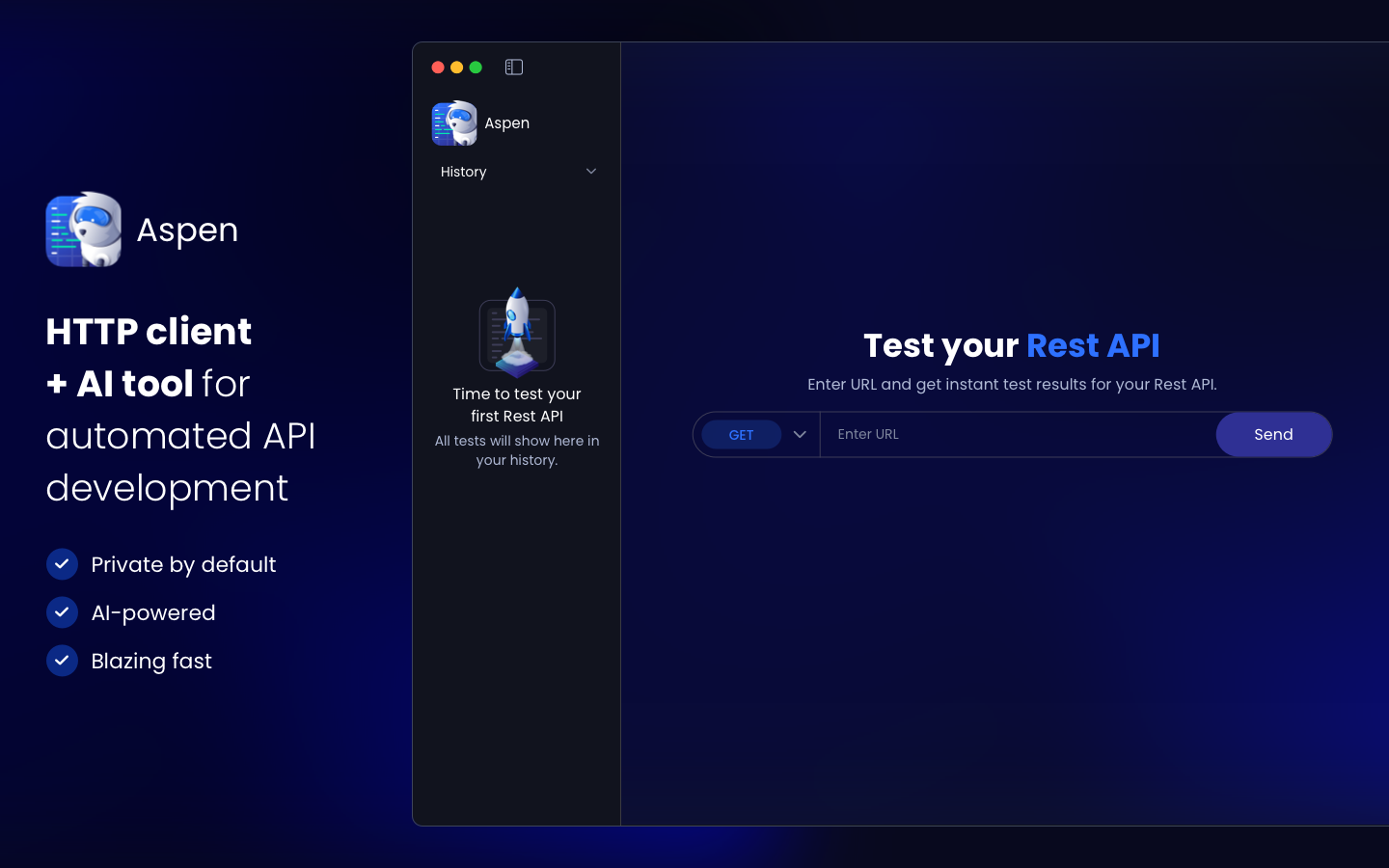
Now, let me walk you through how Aspen addresses these pain points and even goes beyond to offer a delightful API testing experience.
One of the most fascinating features of Aspen is its AI-powered assistant, Alfred.
Let's say:
You make an HTTP request, and like magic, Alfred swoops in to generate data models, integration code, and more in any programming language you desire. This seamless transition from API testing to integration not only saves time but also eliminates the need to switch between multiple tools.
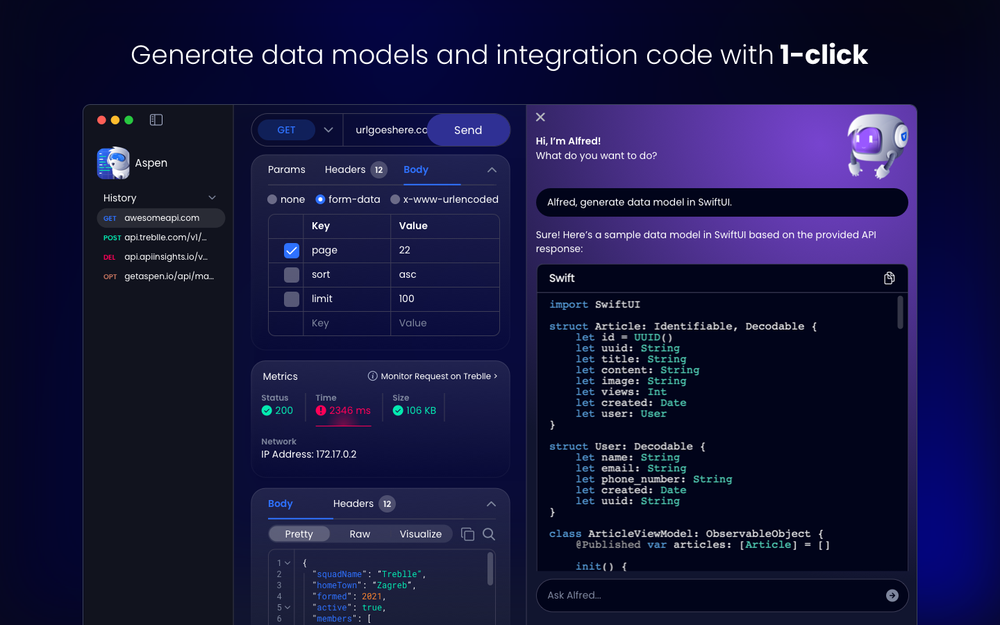
Privacy is a hot topic, and Aspen gets it right. No need for an account to get started, and all your data, including request history, is stored locally on your Mac.
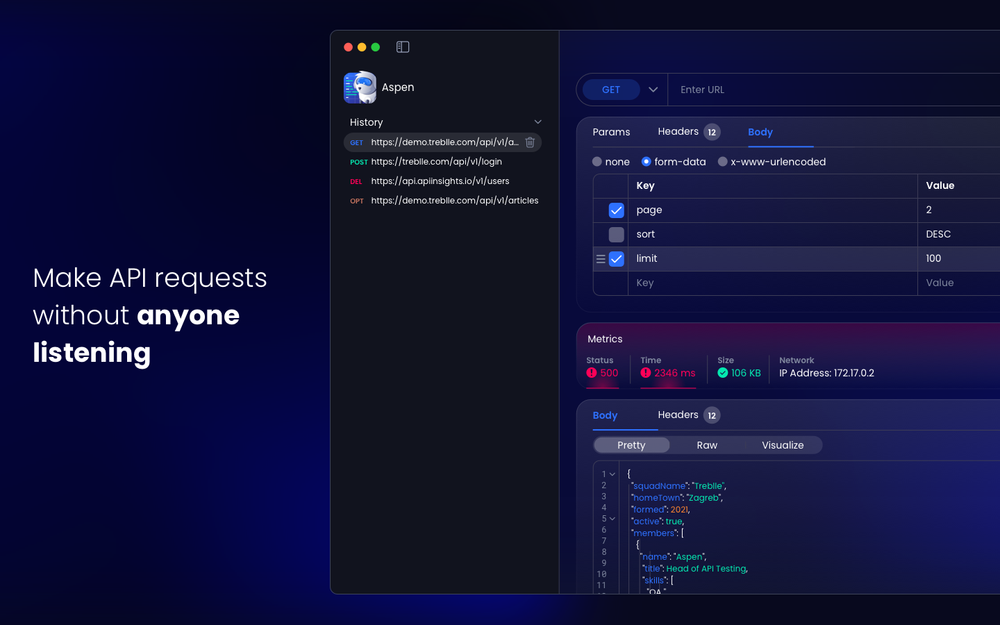
Your privacy remains intact throughout the testing process.
Aspen is optimized for Apple Silicon devices and built-in SwiftUI, which translates to significantly less memory and CPU consumption.
The result?
A smooth and efficient testing experience that won't leave you twiddling your thumbs.

I can't stress this enough: Aspen's interface is a breath of fresh air. It's designed to cater to both beginners and experienced developers, with an intuitive design that makes navigation a breeze.
We understand that every developer has unique needs. We’ve broken down the most common shortcomings in traditional tools like Postman and Insomnia in this article on API testing challenges, which helped shape the design direction for Aspen.
Core API Testing Functionality (All Tools):
To help you decide if Aspen is the right fit, here's a quick comparison with established tools like Postman and Insomnia:
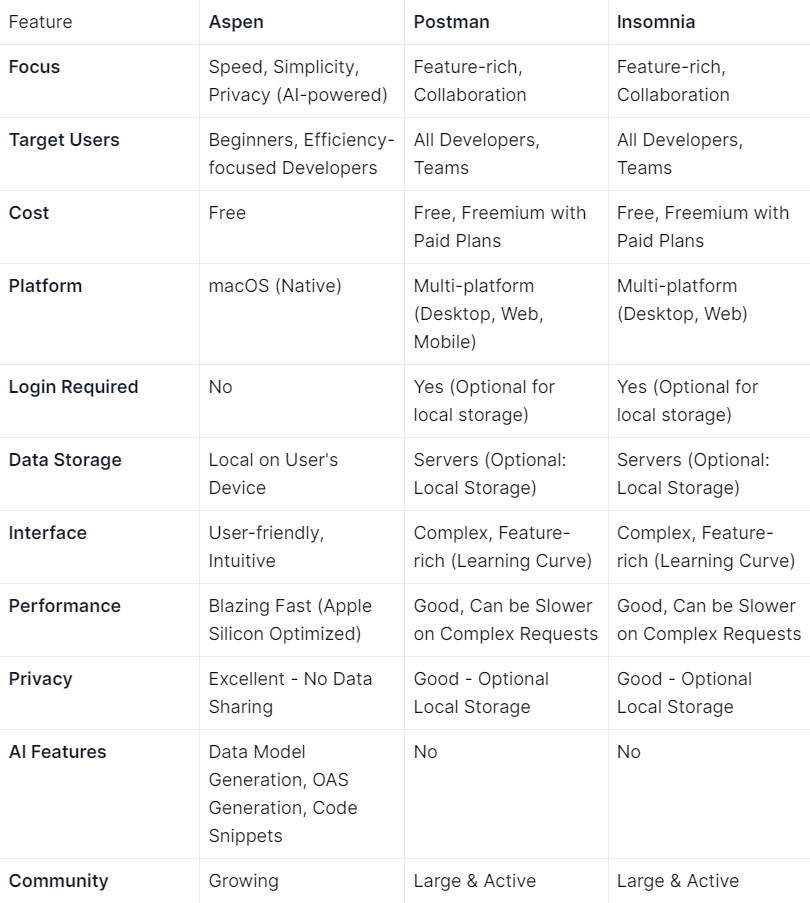
Here are some additional details about Aspen:
While we're enthusiastic about Aspen, here's what real developers are saying:

So there you have it, folks.
Aspen isn't just another API testing tool. It addresses the pain points developers have been voicing for so long and offers unique features that truly enhance the API testing experience.
Happy testing, and may your APIs always return the responses you expect!
 API Design
API DesignAPI authorization defines what an authenticated user or client can do inside your system. This guide explains authorization vs authentication, breaks down RBAC, ABAC, and OAuth scopes, and shows how to implement simple, reliable access control in REST APIs without cluttering your codebase.
 API Design
API DesignRate limiting sets hard caps on how many requests a client can make; throttling shapes how fast requests are processed. This guide defines both, shows when to use each, and covers best practices.
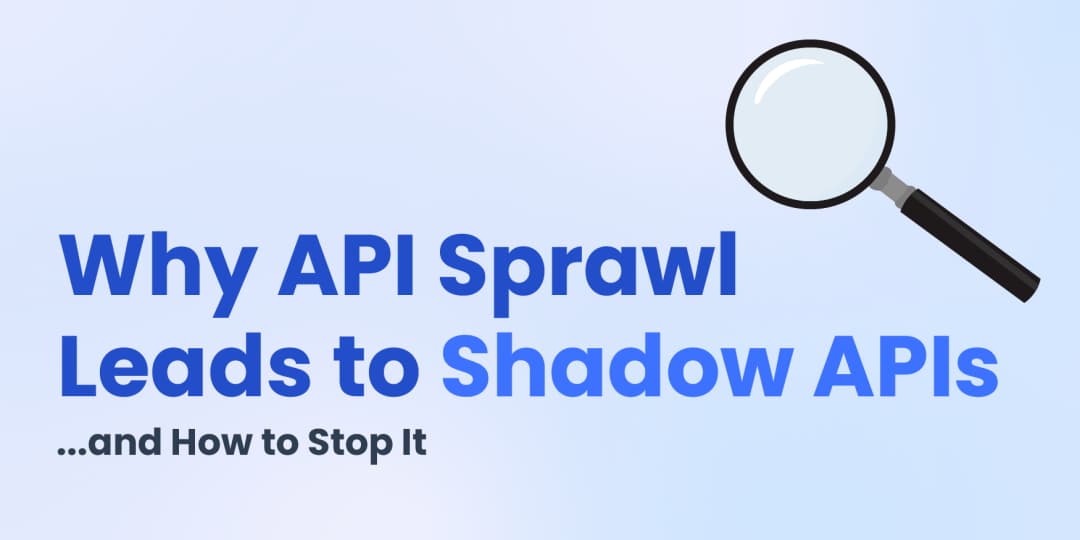 API Design
API DesignUnmanaged API growth produces shadow endpoints you can’t secure or support. This guide explains how sprawl creates blind spots, the security and compliance risks, and a practical plan to stop it at the source.